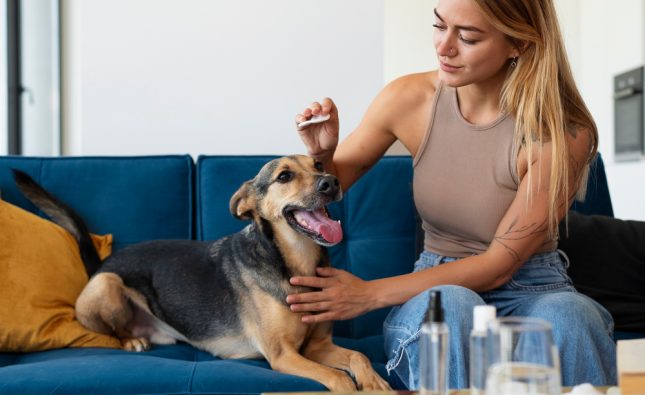
Training is an essential aspect of responsible dog’s ownership, providing not only obedience but also mental stimulation and enrichment for your furry companion. Every dog, regardless of breed or age, can benefit from learning essential skills that enhance their safety, well-being, and quality of life.
Basic Obedience Training
One of the first steps in training your dog is establishing basic obedience commands. Teaching your dog to sit, stay, and come when called lays the foundation for effective communication and control. Additionally, leash manners and crate training are vital for managing your dog’s behavior in various situations.
Socialization Skills
Socialization is crucial for helping your dog feel comfortable and confident in various environments and social settings. Introducing your dog to different people, animals, and environments from a young age helps prevent fear and aggression later in life. Desensitization techniques can also help your dog become accustomed to loud noises and unfamiliar stimuli.
Advanced Commands

Once your dog has mastered basic obedience, you can move on to more advanced commands like lie down, heel, and leave it. These commands provide greater control and flexibility, especially in distracting or high-stress situations. Recall training is particularly important for ensuring your dog’s safety when off-leash.
House Training
House training is essential for fostering a clean and harmonious living environment for both you and your dog. Establishing a consistent routine and using positive reinforcement techniques can help teach your dog where and when to eliminate. Patience and consistency are key during this process.
Problem Behavior Management
Every dog will exhibit undesirable behaviors at some point, but with proper training and management, these behaviors can be addressed effectively. Whether it’s excessive barking, destructive chewing, or jumping on guests, understanding the underlying cause of the behavior is the first step toward finding a solution. Separation anxiety, a common problem among dogs, can also be managed through training and gradual desensitization.
Tricks and Enrichment Activities
Training isn’t just about obedience it’s also about having fun and strengthening the bond between you and your dog. Teaching your dog fun tricks like roll over and play dead provides mental stimulation and adds an element of excitement to training sessions. Engaging in mentally stimulating games like hide-and-seek or puzzle toys keeps your dog’s mind sharp and prevents boredom.
Health and Safety Training
In addition to obedience and behavior training, it’s essential to train your dog to tolerate grooming procedures and veterinary visits. Regular grooming not only keeps your dog looking and feeling their best but also helps prevent health issues like matting and skin infections. Emergency recall training is also crucial for keeping your dog safe in potentially dangerous situations, such as encountering wildlife or running into traffic.
Continuous Learning and Reinforcement
Training is an ongoing process that requires patience, consistency, and positive reinforcement. Even after your dog has mastered basic commands, it’s essential to continue practicing and reinforcing those skills regularly. Consistency in training efforts will help solidify your dog’s understanding of commands and ensure reliable behavior in various situations.
Importance of Patience and Persistence

Training a dog takes time, patience, and perseverance. It’s important to remember that every dog learns at their own pace and that setbacks are a natural part of the process. Celebrate small victories along the way and maintain a positive attitude, even when progress seems slow. With dedication and persistence, you and your dog can achieve remarkable results.
Tailoring Training to Individual Needs
Every dog is unique, with their own personality, temperament, and learning style. As such, training methods should be tailored to suit the individual needs of each dog. What works for one dog may not necessarily work for another, so it’s essential to be flexible and adaptable in your approach to training. Seeking guidance from a professional dog trainer can also be beneficial, especially when dealing with challenging behaviors or specific training goals.
Building a Strong Bond with Your Dog
Training isn’t just about teaching commands—it’s about building a strong bond and fostering a deep connection between you and your dog. Through training, you’ll learn to communicate effectively with your dog and develop a mutual trust and respect that forms the foundation of a lifelong partnership. The training process provides countless opportunities for bonding and teamwork, strengthening the relationship between you and your furry friend.
The Joy of Training Together
Training your dog isn’t just about achieving specific goals—it’s about enjoying the journey together and savoring the moments of progress and accomplishment. Whether you’re teaching a new trick, mastering a challenging command, or simply spending quality time together, training offers countless opportunities for fun and fulfillment. Embrace the process, celebrate the successes, and cherish the special bond you share with your canine companion.
Celebrating Achievements
As you progress through your dog’s training journey, take time to celebrate the milestones and achievements along the way. Whether it’s mastering a difficult command, overcoming a behavioral challenge, or simply enjoying a harmonious walk together, each success is worth celebrating. Reflect on how far you’ve come together and the positive impact that training has had on both you and your dog.
Conclusion
Training for life is an essential aspect of responsible dog ownership, providing numerous benefits for both you and your furry companion. By teaching essential skills like obedience, socialization, and problem behavior management, you can ensure your dog’s safety, well-being, and happiness. Training also offers countless opportunities for bonding, teamwork, and mutual enjoyment, strengthening the special bond between you and your dog.
FAQs
How long does it take to train a dog?
The duration of training depends on various factors, including the dog’s breed, age, temperament, and previous experiences. While some dogs may pick up commands quickly, others may require more time and patience. Consistency, positive reinforcement, and patience are key to successful training.
Is professional training necessary?
While many dog owners can successfully train their dogs at home, professional training can be beneficial, especially for addressing specific behavioral issues or achieving advanced training goals. A professional trainer can provide guidance, support, and personalized solutions tailored to your dog’s individual needs.
How do I deal with a stubborn dog?
Dealing with a stubborn dog requires patience, consistency, and positive reinforcement. Avoid resorting to punishment or harsh training methods, as these can damage the bond between you and your dog. Instead, focus on building trust, using motivational techniques, and rewarding desired behaviors.
What should I do if my dog isn’t responding to training?
If your dog isn’t responding to training, it’s essential to reassess your approach and identify any potential obstacles or challenges. Consider seeking advice from a professional trainer who can offer insight, guidance, and alternative training methods tailored to your dog’s specific needs.
Can older dogs be trained?
Yes, dogs of all ages can benefit from training, although older dogs may require additional patience and understanding. With consistency, positive reinforcement, and patience, older dogs can learn new skills and behaviors, enriching their lives and strengthening the bond with their owners.










